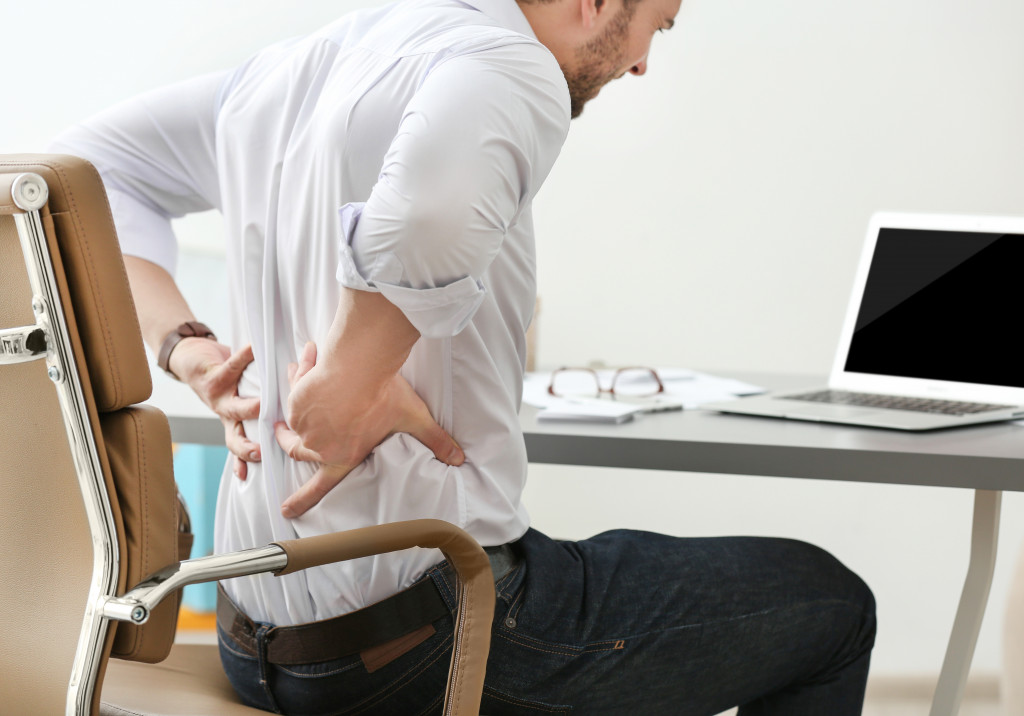When people think of scoliosis, they assume that it is a spinal disorder that developed in childhood. However, people who never had scoliosis as a child can still develop scoliosis as an adult. Scoliosis is a mild curve that makes a person’s waist or shoulders uneven. It is not caused by carrying heavy objects or doing sports. However, it can be caused by age-related back issues or effects of past surgeries.
Scoliosis is usually mild and does not affect one’s health. However, if it is left untreated, it can cause severe back pain and other health issues. Here’s what you need to know about adult-onset scoliosis.
Identifying adult-onset scoliosis
Many cases of adult scoliosis do not have symptoms, although one can feel back pains. However, back pain can be caused by other issues like bad posture, arthritis, and loss of conditioning. Leg pain can also indicate adult-onset scoliosis, especially if there is pressure on the lumbar spinal nerves. In some cases, people who develop scoliosis in adulthood experience uneven pelvis and hip alignment. Others experience a decrease in height.
Other symptoms that one can look into would be trouble walking straight, uneven shoulders, feeling easily tired, shortness of breath, and bone spurs. Some patients also experience feeling full quickly. This is caused by the spine placing pressure on the stomach.
Scoliosis is a health issue and needs a doctor’s diagnosis for one to receive proper treatment. Before doctors suggest treatment options, they will have to look at a patient’s medical history to see if they are experiencing adult-onset scoliosis. Doctors may ask questions about a patient’s family history, pain, and signs of bowel or motor dysfunction.
Through an extensive physical exam, doctors will examine a patient’s back to see their spine’s shape and how the back looks like while they are moving. Patients can also be asked to do muscle strength and reflex checks. Oftentimes, doctors would require x-rays to have a better view of the spine. Other doctors ask for MR or a CT scan to assess patients if they have lower extremity symptoms or other neurological issues.
Treatment options for adult-onset scoliosis
While mild scoliosis is often unrecognized, it needs to be treated to prevent further health issues. A good start would be proper rest and exercise. A good ergonomic chair with proper cushioning could also help reduce back pains caused by scoliosis. Some patients must take non-invasive treatments and therapies like the Schroth method, postural training, or weight maintenance. Other options include taking over-the-counter pain killers, braces, and epidurals.
Back pain is inevitable for those with scoliosis. As pain medications can be habit-forming, these should be used only under doctor’s orders. Some doctors could also prescribe narcotics for patients who experience extreme pain.
Most patients do not need invasive surgeries to address scoliosis. However, in some cases, surgeries are necessary to address worsening symptoms. These surgical treatments are effective and can improve a patient’s health. While most surgeries are associated with risk, patients are given various options that can help address their spinal problems.

Nerve decompression is one invasive treatment option. It addresses compressed nerves that are affected by pressure. During surgery, doctors remove a small portion of the bone over the nerve or a disc that is pressing on the root. This gives the nerve root space for healing an inflamed or compressed nerve. Another invasive treatment is spinal fusion surgery. The goal of this treatment is to provide an environment that helps restore spinal alignment.
Aside from these, surgical stabilization could also be another option for scoliosis treatment. This involves anchoring wires, screws, and hooks to the spinal segments to correct the spine’s position. Osteotomy is another surgical procedure where doctors cut spinal segments to realign them.
Recovering from scoliosis
Besides adhering to doctor’s orders, patients can do things to speed up their healing process. People who have scoliosis but are chain smokers are encouraged to stop smoking. As smoking can cause lung problems, this can worsen one’s scoliosis symptoms. It can also affect healing, especially for those who had to go through invasive treatments.
Regular exercise is also encouraged among people who are recovering from scoliosis. Contrary to common belief, people who have scoliosis should not limit their activities. The more people move, they’ll experience fewer symptoms. Some patients who have scoliosis also have problems with their weight. Hence, doing regular exercise targets their weight management needs while improving their bone density.
Scoliosis is not something that can be gone overnight. While others treat it as mere back pain, leaving it untreated may cause other issues. It is best to ask the opinion of your doctor or physical therapist if you feel that you have symptoms of scoliosis.
